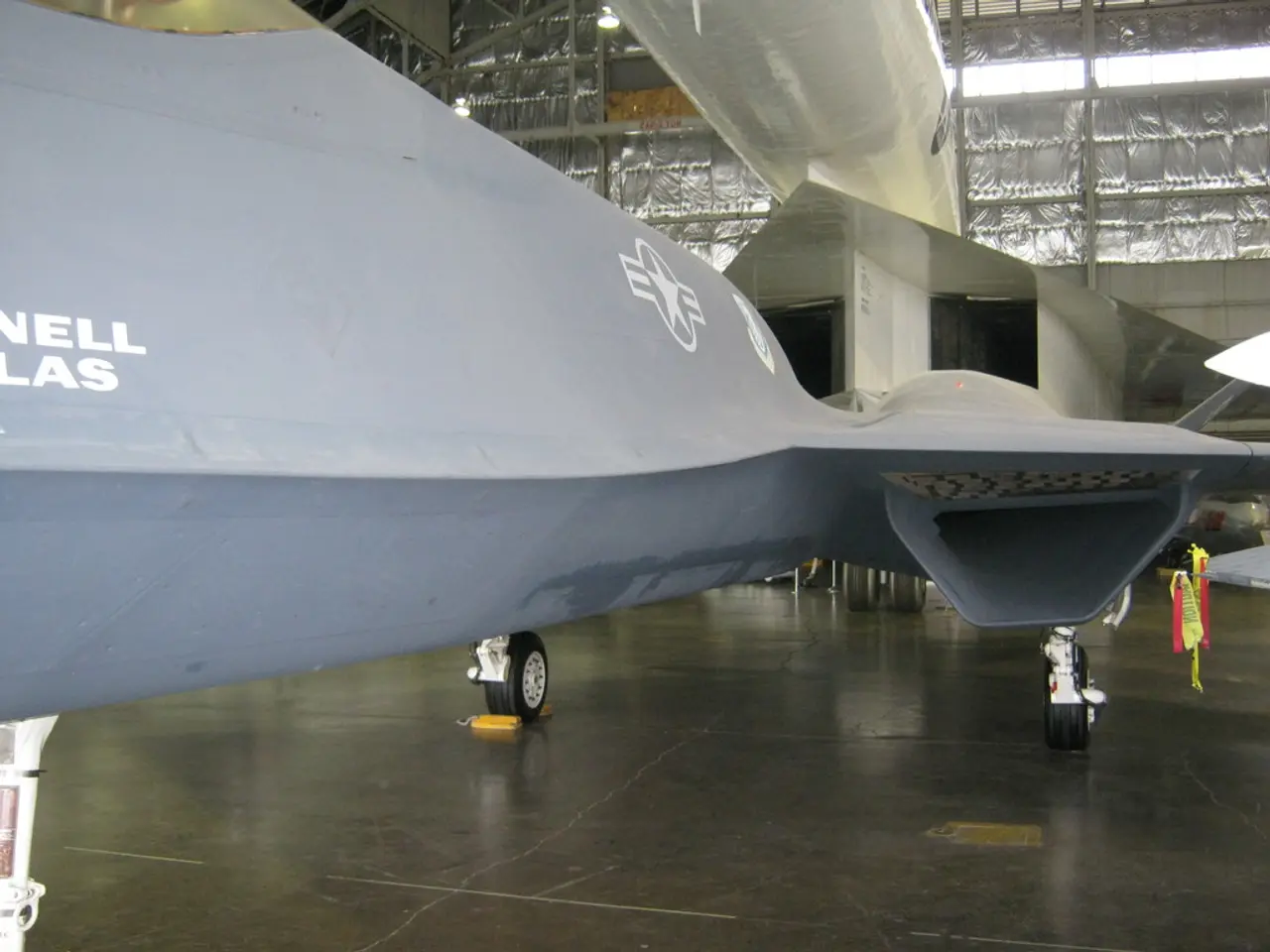Disruption in Goods Distribution Pathways
The aviation industry is currently grappling with significant supply chain disruptions, leading to delays in aircraft deliveries and affecting airline operations. These issues, which are expected to last for several years and potentially until the end of the decade, have far-reaching consequences for both airlines and the environment.
One of the most affected airlines is Lufthansa, which is operating older aircraft instead of a modernized fleet. This decision, driven by the delays in new aircraft deliveries, has resulted in increased costs from more frequent repairs and higher fuel consumption.
The manufacturer backlog now exceeds 17,000 aircraft, a sharp increase from pre-pandemic levels of 10,000-11,000, resulting in an implied wait time of approximately 14 years for aircraft deliveries. Airbus, for example, delivered only 243 commercial aircraft by May 2025, averaging 49 aircraft per month, which remains below targeted production goals.
These delays have led some airlines to postpone launching new routes due to lack of available aircraft and increased leasing costs, causing inefficiencies in fleet utilization. Airlines often have to continue operating aircraft that are less suited to their service needs.
Persistent disruptions include increased lead times, shortages of raw materials and semi-finished components, particularly in critical segments such as engine production. Severe disruptions are mainly concentrated at Tier-1 and Tier-3+ suppliers.
Personnel shortages remain a major challenge, cited by 65% of aerospace companies, along with limited production capacity (34%) and increasing financial constraints hindering production ramp-up efforts.
Airbus is intensifying efforts to improve supply chain transparency for suppliers, which is helping to clarify bottlenecks and improve operational conditions. Better visibility allows suppliers and manufacturers to coordinate more effectively and reduce delays. Some companies not affected by disruptions credit better stock and inventory management along with improved demand forecasts and stronger supplier relationships for their relative stability.
Airlines like Republic Airways are exploring new technologies, such as all-electric aircraft, which may reshape future supply chain demands and reduce reliance on traditional aircraft components. Despite current issues, large order books from manufacturers like Airbus and Boeing indicate confidence in long-term market growth, encouraging sustained investment in overcoming supply chain challenges.
However, hopes for efficiency gains through new technologies come with caveats, as many required technical components are scarce, subject to high tariffs, or in competition with other industries. The increased fuel consumption threatens both internal company and political climate targets.
The bottleneck is also affecting Lufthansa's cargo business, as the newer aircraft were expected to offer more cargo capacity than those still in operation. One in five long-haul aircraft in Frankfurt is held in reserve due to the older planes being more prone to breakdowns.
Experts remain sceptical about the potential integration of companies from other industries into the defense industry, despite the potential benefits such as using production capacity or manufacturing and development expertise. Limited supplier capacity is now contested by companies from the space and defense sectors, in addition to airlines and aircraft manufacturers.
As the industry moves towards recovery, a gradual production ramp-up is expected, with nearly 70% of companies feeling well-prepared to increase production rates by 2025-2026, though financial constraints remain a risk to accelerating these efforts. Improved inventory and demand forecasting, focus on supply chain resilience, and increased transparency are key strategies being employed to address these challenges.
[1] Airline Business, "Airbus and Boeing face a long road to recovery," 2022. [2] Aviation Week, "Aerospace Suppliers Struggle with Personnel, Financial Constraints," 2022. [3] Flight Global, "Airbus and Boeing face extended delays to production ramp-up," 2022. [4] Wall Street Journal, "Airbus and Boeing Deliveries Lag as Supply Chain Issues Persist," 2022.
- The aerospace industry's financial structure, particularly for manufacturers, is under strain due to extended delivery times for new aircraft, with Airbus and Boeing facing a long road to recovery.
- Disruptions in the manufacturing industry, such as those in the aviation sector, are impacting various industries, including finance, energy, and even personal-finance sectors due to increased costs and inefficiencies.
- In the lifestyle sector, the bottleneck in aircraft deliveries is influencing investment decisions, as companies like Republic Airways explore new technologies like all-electric aircraft to reshape future supply chain demands.
- The food-and-drink industry, specifically airline catering, is also impacted by the delays in aircraft deliveries, affecting the supply of meals on long-haul flights.
- The supply chain issues in the aerospace industry have extended to other industries, with experts questioning the potential integration of companies from fashion-and-beauty, home-and-garden, and technology sectors into the defense industry.
- In the sports realm, sports-betting platforms have seen a reduction in avenue expansion due to the lack of available aircraft and increased leasing costs for airlines, causing inefficiencies in their operations.
- The travel industry is experiencing a significant knock-on effect, with some tourist destinations reporting a decline in visitor numbers due to the disrupted airline operations.
- Data-and-cloud-computing providers are aiding various industries in improving their supply chain resilience by providing real-time data, enhanced demand forecasting, and better inventory management, contributing to more effective strategic decision-making.
- As the weather worsens, the impact on aircraft deliveries becomes more pronounced, leading to further delays and production backlogs, prolonging the existing challenges for the aviation industry.




